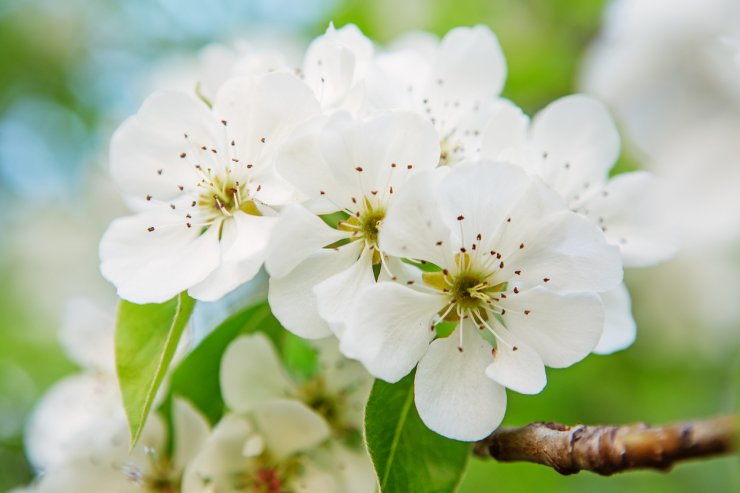
Pear blossoms need pollination from other pear trees.
Most pear varieties are not self-pollinating, so they need a pollination buddy. That means you should get your pear trees in pairs. Choose two varieties in the same blooming group: early, midseason, or late.
Plant (or place) your pollination buddies within 60 feet of each other to ensure cross-pollination. Most pear cultivars will be ready for harvest between late summer and late fall. Remember that European pears ripen after you pick them; they need to chill for anywhere between two days to six weeks. Bartlett pears need to chill for two or three days; Comice, Anjou and Bosc pears need to sit in cold storage between two and six weeks. After that you can ripen them at room temperature.
If harvested pears don’t get that crucial chilling period, they’ll just decompose rather than ripen. The same thing will happen if you leave them on the tree to ripen; they’ll start to fall apart from the inside out. If you find soft European pears on your tree, they’re past their prime.
Things are a little less complicated with Asian pears—they ripen on the tree. Yet another consideration as you decide which pears are a match for your garden.
What types of pears have you tried growing? Which cultivars do you think make the best pollination buddies? Please tell us about your experiences with cultivating pears.


 Previous
Previous


We have a small commercial orchard with about 6 acres of Bartlett pears. They are interplanted with Asian pears for pollination (Shinseiki). This pairing would give a nice variety and time frame for harvest for a backyard orchardist.